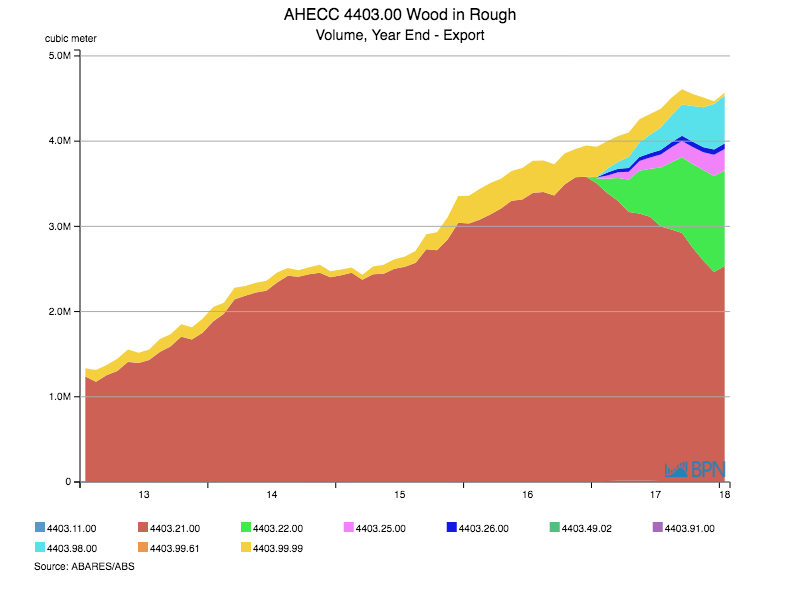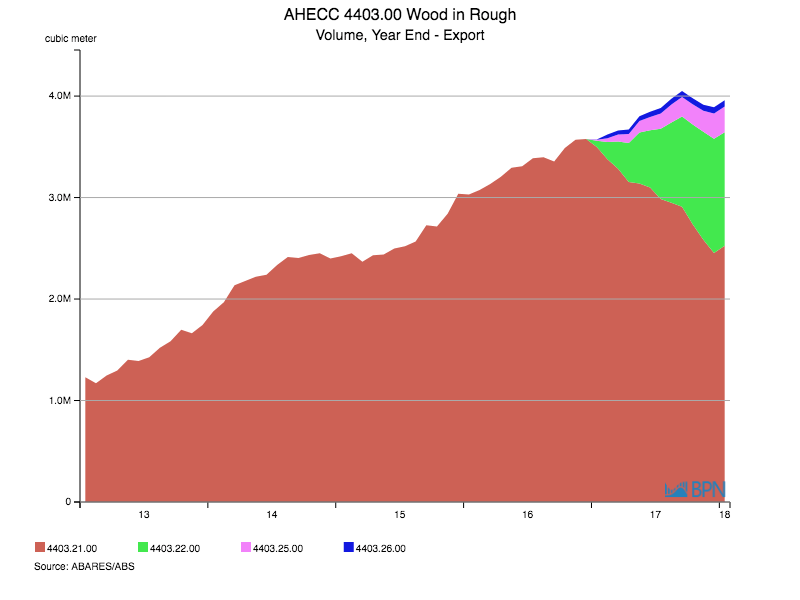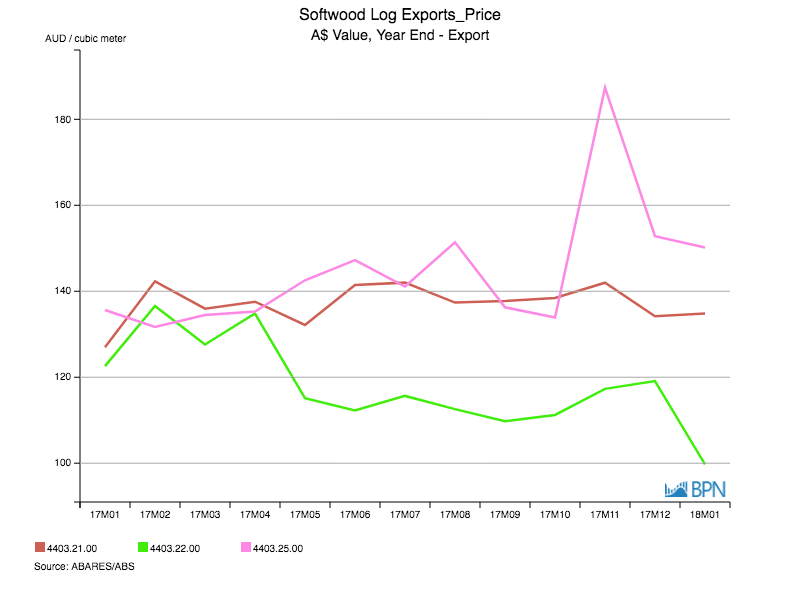Australian log exports totalled 4,573,782 m3 for the year-ended January 2018, just below the record set for the year to September 2017. Exports of all grades have experienced remarkably strong growth, but none has been more dramatic than the growth in softwood log exports.
The chart below displays total log exports, from 2013. The increase in the number of products from the start of 2017 relates to export code changes that were introduced to distinguish further between the different types of logs. Total log exports rose 16.1% over the year, continuing a long run of rising exports.

To go straight to the dashboard and take a closer look at the data, click here.
The second chart takes out hardwood logs and shows only softwood log exports, but by grade since the start of 2017. For clarity, the softwood log grades are detailed in the table below.
| Code | Log Grade |
| 4403.21.00 | Wood in Rough, Pine – Coniferous >/=15 cm |
| 4403.22.00 | Wood in Rough, Pine – Coniferous <15 cm |
| 4403.25.00 | Wood in Rough, Other – Coniferous >/= 15 cm |
| 4403.26.00 | Wood in Rough, Other – Coniferous <15 cm |
For the year-ended January, total softwood log exports rose 10.9%, to reach 3,959,939 m3.

To go straight to the dashboard and take a closer look at the data, click here.
Relevantly, while the volume of softwood log exports rose 10.9% over the year to the end of January, the export value rose to AUD526.1 million, up almost 18% on the prior year. The value of Australia’s softwood logs has been growing. On a simple average basis, the price of Australia’s softwood logs was AUDFob132.85/m3 over the period, up 6.3% on the prior year.
The average prices of the three main grades of softwood log exports are detailed in the chart below. Exports of 4403.26.00 are so small in some months, it pollutes the chart too extensively to use effectively. Because the separation of softwood logs into distinct grades is relatively new, full year comparisons are not yet available.

To go straight to the dashboard and take a closer look at the data, click here.
While the price rises are less than those for some European log grades described earlier in this edition of Stats Count, they are broadly in line with those price movements.



